Apple iMac Pro review: The return of the king
Apple regains its place as the big dog of enterprise workstations
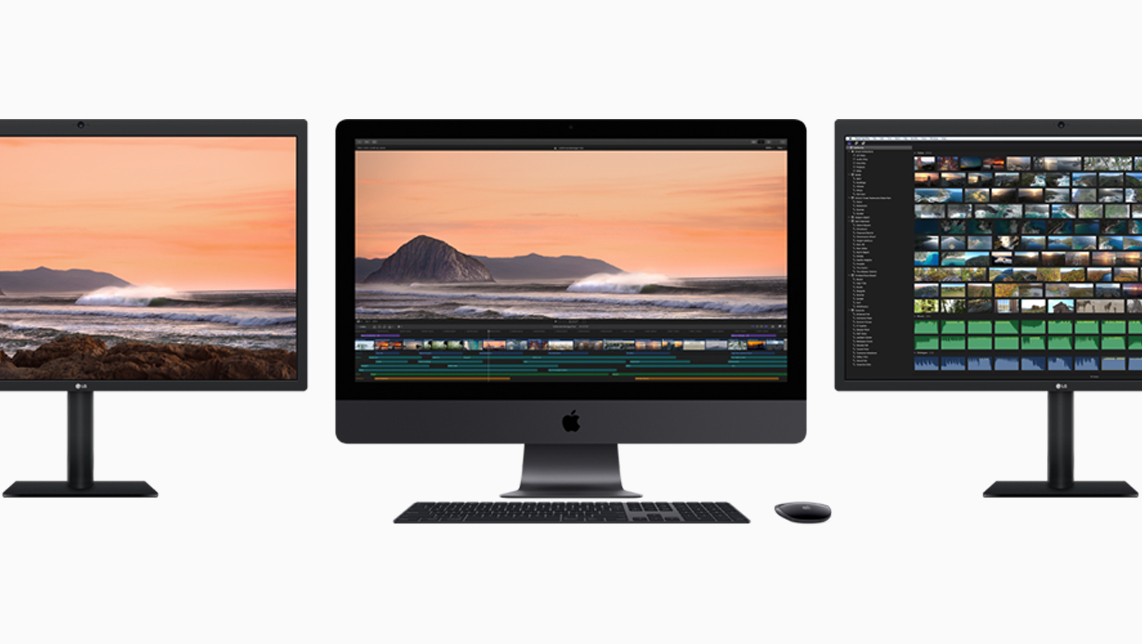

The iMac Pro is Apple's attempt to take back the workplace, and it's come out swinging. Not only is it the most powerful Mac ever made, it's managed to fit in all that power without sacrificing any of Apple's world-class design aesthetic. If you can afford it, you won't regret it.
-
+
The most powerful Mac ever; Stunning design; Gorgeous screen
-
-
Expensive

Apple's range of iMacs has certainly received a mixed bag of attention, from both consumers and business users since it was first released in 1998. It's loved by those in the design industry as much as those looking for a beautiful desktop design. They're powerful, beautiful and now, its latest range of iMac Pros have been taken to a whole other level, with the performance to power some seriously labour-intensive workloads.
The iMac Pro is Apple's first enterprise-level machine since the Mac Pro. But this power comes at a price and this is where the company has received some criticism. With pricing from 5,000 all the way up to more than 12,000 for the top-of-the-range machine, it's not surprising some have given the company some negative press.
But truly, the iMac Pro is a force to be reckoned with. It's Apple's most powerful machine to date, equipped with a massive 18-core Intel Xeon W processor and 128GB of DDR4 memory. When you mix its might with Apple's prowess, you have a machine that's seriously tempting for enterprises looking to beef up their computing arsenal.
Apple iMac Pro review: Design
One of the things that Apple consistently leads the market on is the design of its entire range of devices. The iMac design has evolved a lot over the last two decades and many have tried to copy its sleek aesthetic, but no one has really managed to hit the same level of class.
Understandably, Apple hasn't messed with its winning formula, and the iMac Pro is visually identical to the vanilla iMac. It's got the same minimalist aluminium shell and the same clean lines. There are a few critical differences, though. For a start, the iMac Pro is the only member of the iMac family to come in Space Grey - which is the only colour it comes in.
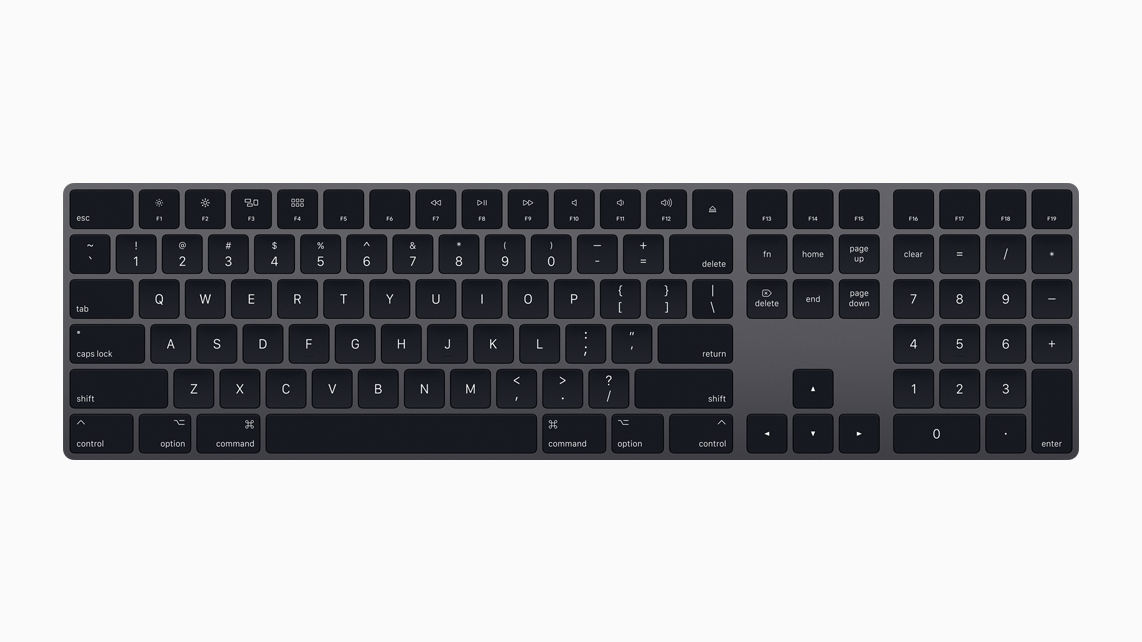
Each machine comes with one of Apple's Magic branded keyboards, as well as a Magic Trackpad and Magic Mouse, both of which are the second generation versions. All of these peripherals come in Space Grey, which is currently the only way to obtain that colour.
If it isn't obvious already, we're besotted with the look of the iMac Pro - it manages to keep that classic iMac design while adding an air of business-like sophistication with the Space Grey finish.
Yet, its appeal isn't just superficial. Its perfect mechanical balance means you can tilt and rotate the screen with absolute ease, and a handful of new mounting features mean it will likely be a hit among business users - specifically, you can now detach the base and fix it to a wall mount or third-party stand.
One gripe we still have with the iMac design, however, is the lack of any means to adjust its height, but that's a fairly minor criticism when the rest of the construction is this good.
What may prove to be a bigger problem is the lack of customisation available. It's certainly possible to get into the case and replace a number of its components, but this requires considerable effort and users risk voiding any warranty they have with Apple. Windows workstations, by comparison, are a doddle to repair and upgrade, with easy access to the internals and no tricky proprietary standards to cause you headaches.
Apple iMac Pro review: Display
Apple's hardware is famous for its image quality, and the display quality of its latest iMac range is absolutely stunning. Unsurprisingly, the iMac Pro is every bit as capable as its stablemate in this regard, and the 27in screen is an absolute joy to behold.
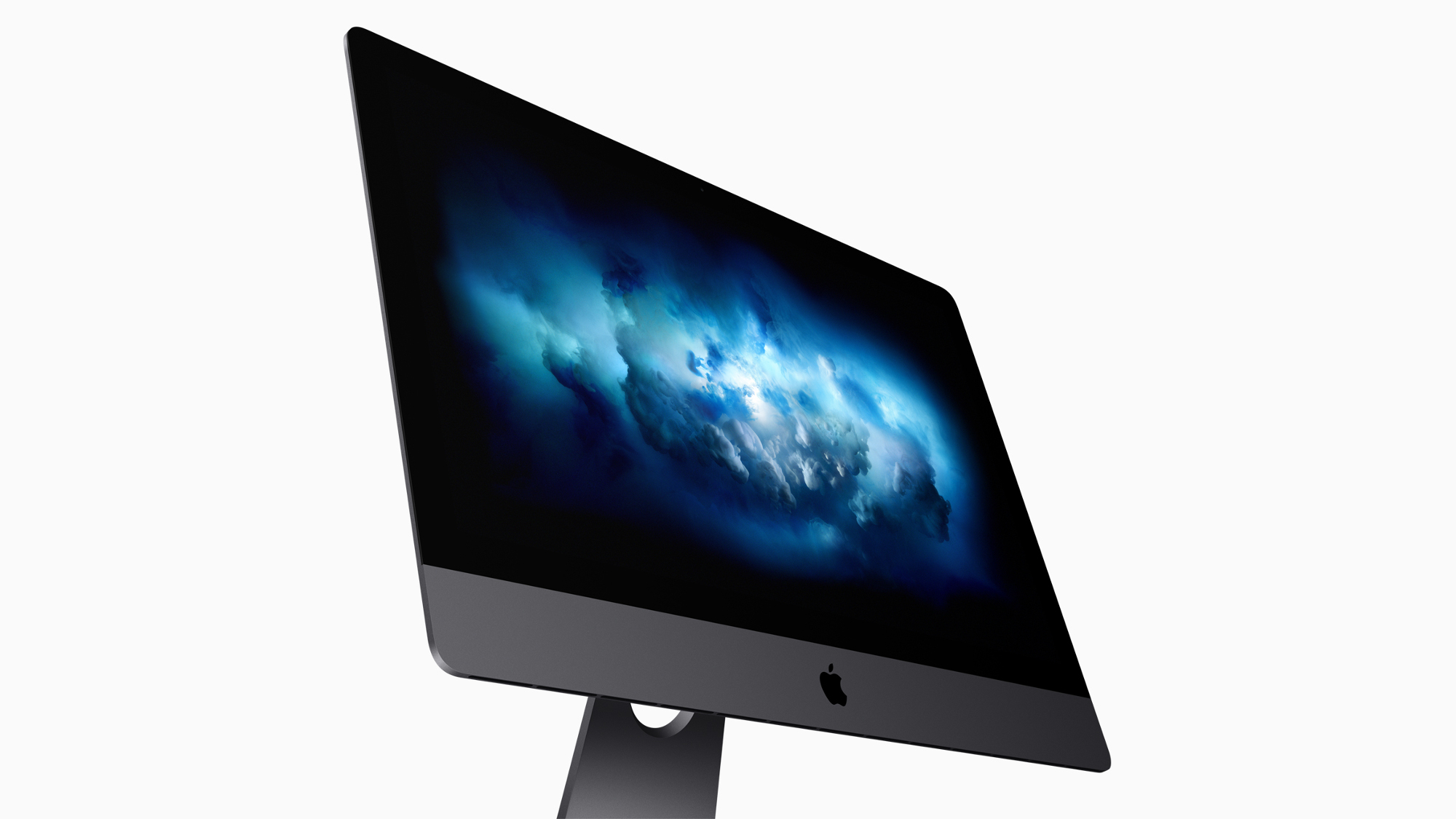
It's got a 5K resolution (which translates to 5,120 x 2,880 if you want to be specific) and supports the wide colour DCI-P3 gamut. It was effectively flawless in our display tests, covering 98.9% of the DCI-P3 gamut and producing gorgeous, accurate colours and sharp, crisp blacks with deep contrast. At 551cdm/2, the maximum brightness is actually slightly blinding - we had to turn it down to about 75% to reach a comfortable level.
The iMac Pro's display is sure to be a big hit with designers and graphics professionals, for obvious reasons. Not only is it huge, pin-sharp and incredibly accurate, it also supports a wide range of different colour profiles for a variety of different professional use-cases. It's a perfect demonstration of why Apple has earned such a sterling reputation for creating beautiful, high-quality displays.
Apple iMac Pro review: Performance
Apple has brought out the big guns for the iMac Pro. It's the company's most powerful machine to date, and intended to handle pretty much anything a business can throw of it, short of heavy-duty server operations. With an 18-core Intel Xeon W processor, 128GB of DDR4 memory and AMD's Radeon Pro Vega 64 graphics chip in the top-spec configuration, it's fair to say that this machine is an absolute monster.
Of course, you'll have to fork over a truly eye-watering amount if you want that much power - the most expensive configuration costs in excess of 12,000. Paying that much money for a desktop computer may sound like utter madness, but it's important to put that number into perspective. A comparably-specced Windows workstation would cost at least 10,000 - and that's without including the cost of a 21in 5K monitor.
With this much firepower on display, you'd hope that the iMac Pro would be capable of some seriously impressive feats, and Apple's workhorse certainly doesn't disappoint. We tested the standard (and least powerful) configuration, which comes with 3.2GHz octocore Intel Xeon W-2140B processor, an 8GB Radeon Pro Vega 56 GPU and 32GB of RAM.
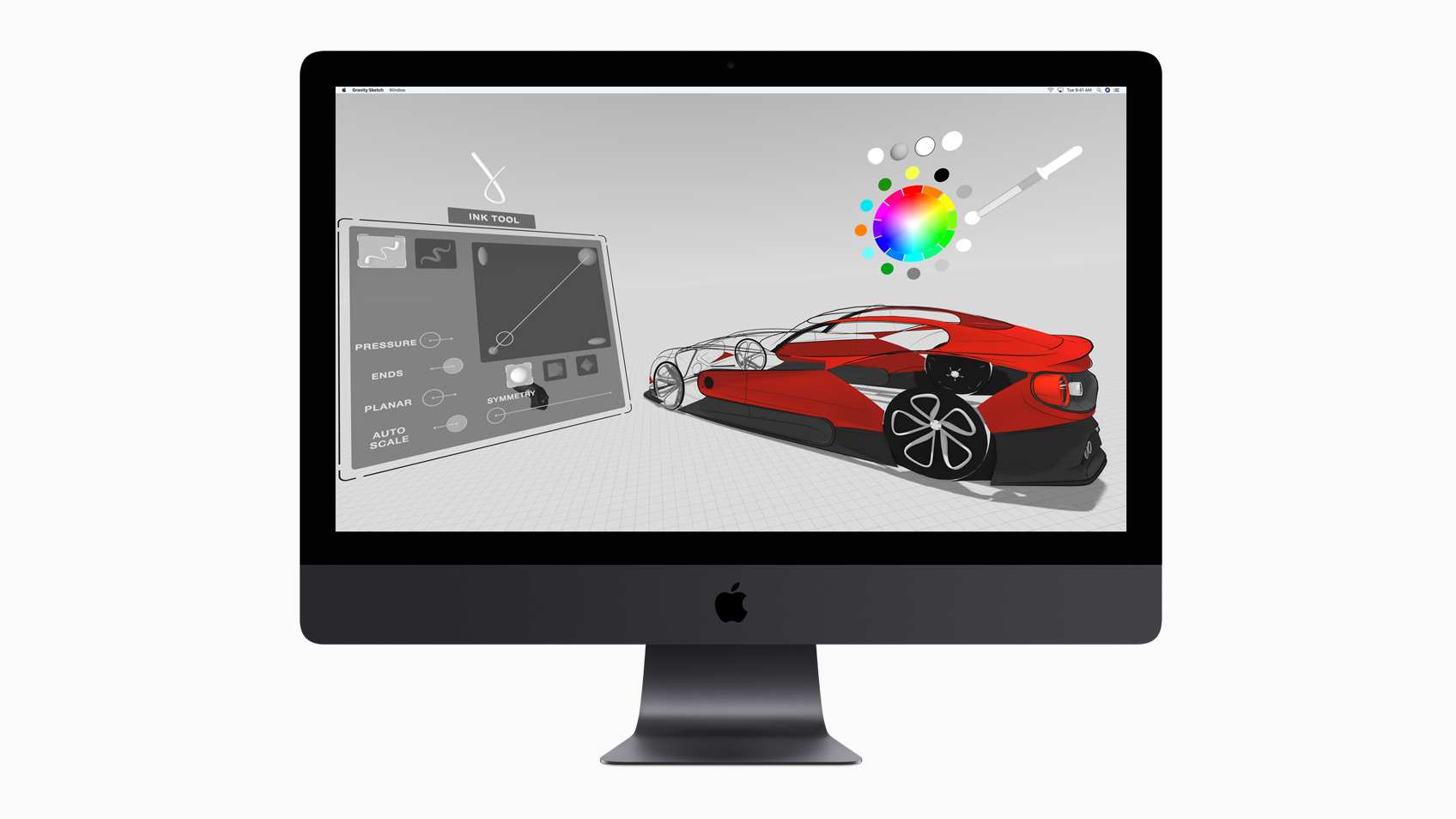
Even though this is the iMac Pro's entry-level configuration, it easily blew last year's bottom-tier 5K iMac out of the water in our benchmarks, racking up an overall score of 283 - well over double the regular iMac's score of 109. It's worth noting that these improvements are almost entirely centred around multi-core operations. The iMac Pro scored similarly to the 5K iMac in our single-core image editing tests, but it was more than twice as efficient at video editing, and multitasking was around three times faster.
Graphics performance is good as well. On Unigine's heaven benchmark - a reasonably demanding test of graphical horsepower - the iMac Pro managed to achieve 48fps at a 2,560 x 1,440 resolution and medium detail. Although this is only marginally better than the 5K iMac's result from last year, it's nonetheless impressive. It even managed a smooth 35fps on the ultra quality setting. We should also point out that at no point during our testing did we notice any loud cooling fans, and machine felt cool to the touch throughout the duration. It's one cool cucumber.
Unlike most Macs, this machine is specifically designed for use with 3D modelling, rendering and CAD tasks, which means it needs a bit more grunt than your average MacBook. Thankfully, however, the iMac Pro doesn't disappoint in this regard, keeping pace with hulking Windows workstations such as the PC Specialist Apollo X02, the Scan 3XS WI4000 and the Chillblast Fusion Render OC Lite in our workstation performance benchmark tests.
Storage is lightning-quick, too, with the 1TB PCIe SSD delivering measured read speeds of 2.4GB/sec and write speeds of 3GB/sec - well over twice the speed of the 2017 iMac's Fusion Drive. In fact, compared to the latter's 130MB/sec write speed, the iMac Pro is over 2,000% faster.
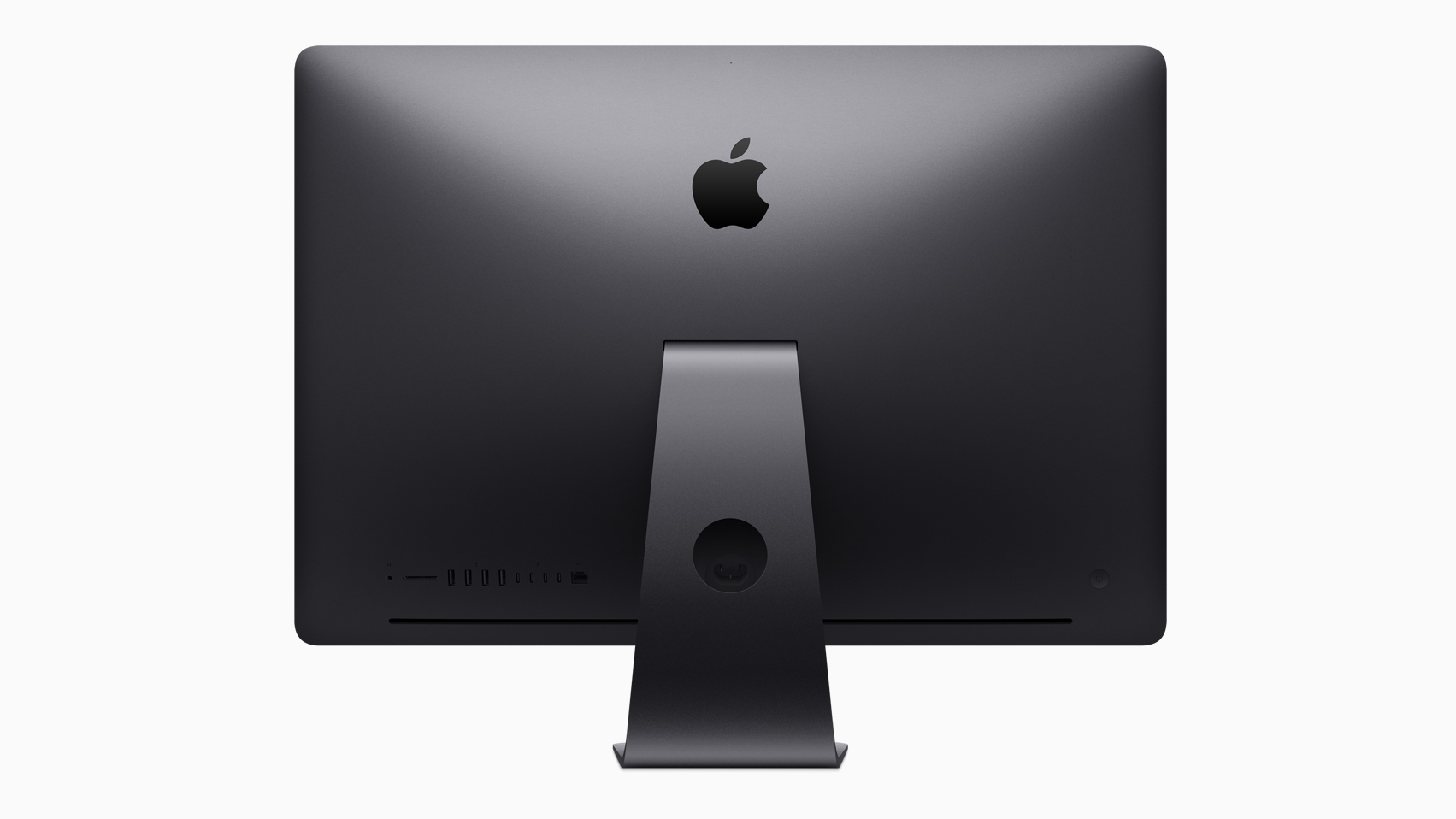
All of which is to say that this is an almost frighteningly powerful machine. It's not as quick as the beefiest Windows workstations on the market, but it's far and away the most capable piece of hardware that Apple has ever produced - and this is just the entry-level configuration. From 3D rendering to extreme multi-tasking and demanding media editing work, there's not much that this sleek all-in-one won't be able to handle - including virtual reality hardware and apps.
Apple iMac Pro review: Ports and features
Apple may have abandoned the idea of versatile connectivity options for its MacBook range, but it certainly hasn't given up on it with its desktop devices. The iMac Pro is sporting a robust suite of port options, including 10Gb Ethernet, an SDXC card reader, four USB 3.0 ports and no less than four Thunderbolt 3 inputs. These allow you to connect not only two external 5K monitors, but also an external GPU, letting you bolster your iMac Pro with additional graphics processing power.
Apple iMac Pro review: Verdict
The iMac Pro is one seriously heavyweight contender. It's fitted with some of the most powerful components ever to grace an Apple machine, and it puts them to great use. The display is as gorgeous as you'd expect and the whole thing runs like a dream.
Let's address the elephant in the room, though. Yes, it's expensive, but as we mentioned earlier, it's actually not that much more expensive than Windows machines in the same category. Admittedly, you will be paying a noticeable markup compared to similarly-equipped rivals, but remember that for your initial entry price, you'll also be getting a truly spectacular 27in 5K display, and the whole package is wrapped up in by far the sleekest and most attractive chassis of any enterprise workstation.
If the iMac Pro is Apple's attempt to reclaim the business market, then we have to say that it's putting up one hell of a fight. This machine takes all the raw grunt you'd expect from a heavy-duty enterprise PC and crams it into Apple's signature all-in-one design in a way that virtually defies comprehension.
It may not be the most powerful - and it's certainly not cheap - but as far as we're concerned, the iMac Pro represents the pinnacle of business-grade workstation design. Go on, why not treat yourself?
| Processor | 3.2GHz Intel Xeon W-2140B |
| RAM | 32GB |
| Dimensions | Row 2 - Cell 1 |
| Weight | Row 3 - Cell 1 |
| Screen size | 27in |
| Screen resolution | 5,120 x 2,880 |
| Graphics adaptor | AMD Radeon Pro Vega 56 8GB |
| Total storage | 1TB |
| Operating system | macOS High Sierra |
Get the ITPro daily newsletter
Sign up today and you will receive a free copy of our Future Focus 2025 report - the leading guidance on AI, cybersecurity and other IT challenges as per 700+ senior executives
Adam Shepherd has been a technology journalist since 2015, covering everything from cloud storage and security, to smartphones and servers. Over the course of his career, he’s seen the spread of 5G, the growing ubiquity of wireless devices, and the start of the connected revolution. He’s also been to more trade shows and technology conferences than he cares to count.
Adam is an avid follower of the latest hardware innovations, and he is never happier than when tinkering with complex network configurations, or exploring a new Linux distro. He was also previously a co-host on the ITPro Podcast, where he was often found ranting about his love of strange gadgets, his disdain for Windows Mobile, and everything in between.
You can find Adam tweeting about enterprise technology (or more often bad jokes) @AdamShepherUK.
-
 ‘Phishing kits are a force multiplier': Cheap cyber crime kits can be bought on the dark web for less than $25 – and experts warn it’s lowering the barrier of entry for amateur hackers
‘Phishing kits are a force multiplier': Cheap cyber crime kits can be bought on the dark web for less than $25 – and experts warn it’s lowering the barrier of entry for amateur hackersNews Research from NordVPN shows phishing kits are now widely available on the dark web and via messaging apps like Telegram, and are often selling for less than $25.
By Emma Woollacott Published
-
 Redis unveils new tools for developers working on AI applications
Redis unveils new tools for developers working on AI applicationsNews Redis has announced new tools aimed at making it easier for AI developers to build applications and optimize large language model (LLM) outputs.
By Ross Kelly Published
-
 Google layoffs continue with "hundreds" cut from Chrome, Android, and Pixel teams
Google layoffs continue with "hundreds" cut from Chrome, Android, and Pixel teamsNews The tech giant's efficiency drive enters a third year with devices teams the latest target
By Bobby Hellard Published